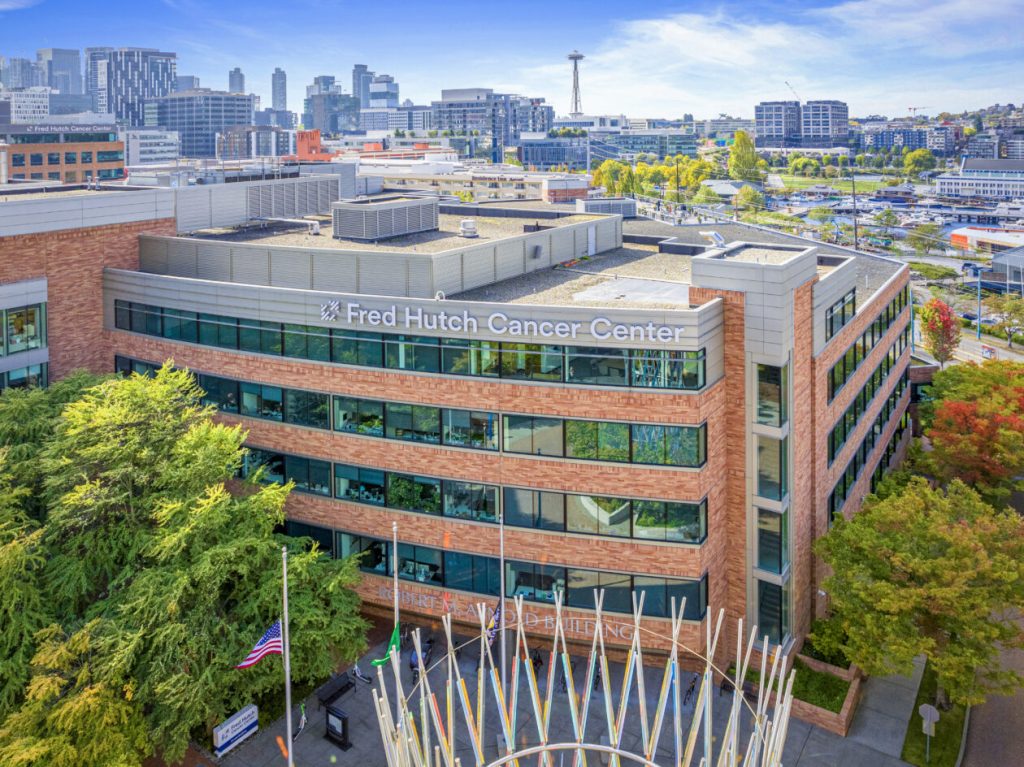Fred Hutchinson Cancer Center: 50 Years of Transforming Cancer Treatment
In the heart of Seattle’s South Lake Union neighborhood, the Fred Hutchinson Cancer Center marks a remarkable milestone—50 years since its founding. What began as a small organization with bold ideas has evolved into a 6,000-employee institution that has fundamentally transformed cancer treatment and helped establish Seattle as a thriving biotech hub. Dr. Fred Appelbaum, who has been with Fred Hutch since nearly its inception, remembers the early, scrappier days when the nonprofit was working to turn Dr. Donnall Thomas’s revolutionary ideas about bone marrow transplants into viable treatments. “That history of success tells us that we did it before, and we should be able to do it again,” Appelbaum reflects. “That’s embedded in the personality of the Hutch.” This pioneering spirit has led to the creation of 50 spinoff companies, including notable names like Juno Therapeutics, Adaptive Biotechnologies, and Affini-T Therapeutics.
The early days of bone marrow transplant research at Fred Hutch were challenging and often heartbreaking. Working with desperately ill leukemia patients who had limited alternatives, the team conducted experiments that included radiation treatments delivered in underground World War II bunkers. Initial cure rates hovered around just 15%, and Appelbaum recalls the emotional toll: “Time and again you’d have patients come in with hopes that they could be saved, and their family hoped that they could be saved, and unfortunately the toxicity of the transplant caused them to die or the disease came back.” But perseverance led to breakthroughs, and as the therapy was refined, outcomes improved dramatically. Dr. Thomas’s work was so groundbreaking that it earned him the Nobel Prize in 1990. “That was incredibly exhilarating,” Appelbaum says of the successful cases. “They’d been brought back literally from the jaws of death.” From these initial successes, researchers made additional discoveries, including the realization that bone marrow transplants could treat certain genetic ailments like sickle cell disease, and their work helped spur developments in CAR-T cell therapy by demonstrating how to genetically manipulate immune cells to recognize cancer.
The impact of Fred Hutch extends far beyond Seattle. Dr. Norman Sharpless, former director of the National Cancer Institute and acting commissioner of the FDA, describes it as “a storied research institution that has been key to the progress for patients with cancer.” He emphasizes that “many thousands of people who were once diagnosed with cancer are alive today because of critical discoveries at the FHCC.” The center’s reputation is so esteemed that Dr. Robert Vonderheide, director of the Abramson Cancer Center at Penn Medicine, notes that in the field, people simply refer to it as “The Hutch,” a name that signifies “Nobel-winning discovery and innovation, and science and treatments that make a difference for patients with cancer.” From treating around 100 patients annually in its early days, Fred Hutch now serves 50,000 patients each year for a wide range of cancers.
The nature of cancer research has evolved significantly over the center’s half-century of existence. Appelbaum observes several key shifts: while the past was marked by serendipitous breakthroughs that opened entirely new fields, today’s science follows a more methodical path of incremental advances building logically upon previous work. Technology-facilitated collaborations and data sharing across institutions now accelerate discoveries. Advanced laboratory technology and computing allow researchers to better understand the complex cellular interactions underlying cancer. And while research infrastructure has become more costly and typically limited to large institutions, many operations—such as DNA sequencing and therapeutic antibody production—have become much more affordable. When asked if we’re getting closer to the moonshot of curing cancer, Appelbaum responds with measured optimism: “We are curing lots of cancers,” he acknowledges, while noting that some types, like pancreatic cancer and glioblastomas, remain difficult to treat. “But that doesn’t mean that they are insurmountable… I firmly believe that we will, over the next decade, continue to unravel all the reasons why our current therapies, which should work, don’t work.”
Despite its storied successes, Fred Hutch faces significant challenges as it enters its next chapter. The organization received $305 million in National Institutes of Health funding last year—second only to the University of Washington among NIH recipients in the state. However, proposed changes to federal research funding threaten this vital support. The Trump administration has proposed capping indirect cost payments at 15%, far below Fred Hutch’s current 76% rate—a change that would eliminate approximately $125 million in annual support for the center, whose operating budget was $2.1 billion last year. While these cuts are being contested in court and Congress is still deliberating, the impacts are already being felt, with hiring delays and organizational energy diverted to contingency planning. “We’re very, very, very concerned, but we don’t know right now what is going to happen,” Appelbaum admits. The center has made some layoffs, though the exact number hasn’t been disclosed.
Despite funding uncertainties, Fred Hutch continues to benefit from philanthropic support, including $710 million from Amazon founder Jeff Bezos and his family (to be distributed over a decade) and a recently increased $100 million gift from Stuart and Molly Sloan, owners of University Village. More importantly, Appelbaum maintains his vision for the future of cancer care. He imagines a day when people will come in for their annual physical and have a painless blood sample taken that can detect any hints of cancer. If something is found, “we’ll remove that early tumor, and we’ll vaccinate you,” he says. “The tumor will never come back. That’s how we’ll cure cancer.” This vision of early detection and prevention, building on the foundation of five decades of groundbreaking research, represents the next frontier for an institution that has already saved countless lives through its commitment to innovation and excellence in cancer treatment.


